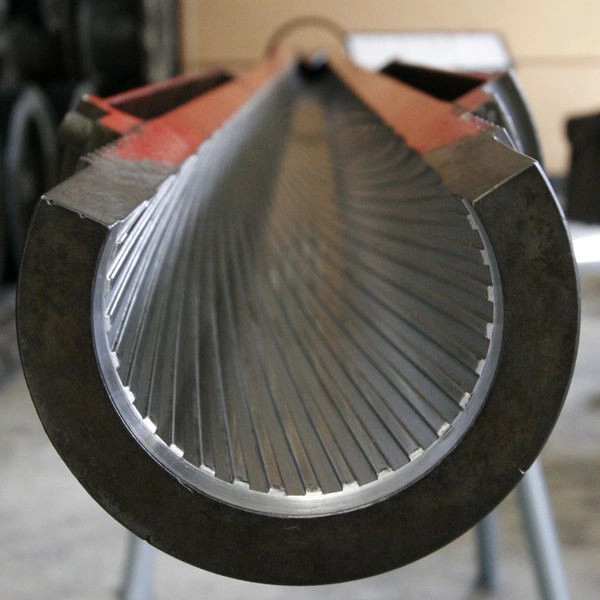The Kestrel is one of those items that can seem to have a bit of black magic about it. For those who haven’t used one, it is a small device that looks like a handheld GPS that long-range shooters pull out of their pockets, point towards the target, hum and hah about for a bit, then return to their pockets (or throw down next to their rifle), point their gun and shoot.
But what does the unit do? Are they are a critical component to long-range shooting? Or just another gadget for the lads?
Previously, through my experience playing online military simulators (ARMA in particular), I was aware, fundamentally, of what they did. I had always had an interest in long-range shooting, as well as the equipment that went around it. So when I started heading out to long-range field shoots, I wasn’t surprised to see the green and black units being pulled out and waved about.
A primer on external ballistics
To understand what a Kestrel does, it is probably best to first talk a little about external ballistics. What they are, and how they affect our shooting. Then, we will see how the Kestrel fits into the equation.
Once a projectile leaves the rifle barrel, it becomes subject to external ballistics. The two primary factors that come into effect are gravity (the bullet drops) and wind (the bullet shifts sideways). Let us have a look at the two factors separately.
Bullet Drop
We are all probably aware of how gravity works. Regardless if the projectile is a .22 or a .50 cal, once it leaves the rifling, it wants to drop back down towards the earth. If we want to shoot out further, we necessarily need to counter this by ‘aiming up’ – aiming the muzzle up higher than our intended target. Then, the projectile heads up in a graceful arc and back down onto the target.
All things drop at the same speed. So, it becomes more a question of ‘how fast’ and therefore ‘how far’ a projectile can travel horizontally before it hits the ground. The slower a projectile ‘cuts’ through the air, the higher up will have to aim to get it out far, and conversely, a projectile that travels through the air with more ease is going to be called ‘flatter shooting’ and is going to let us get out further without having to aim off as high. This is what BC or Ballistic coefficient describes – the ability for a projectile to ‘cut’ through the air – its the slipperiness.
Slippery Bullets, Sticky Air
So, we want a slick bullet. However, the environment we are shooting in can also dictate how ‘sticky’ the air is as well.
Several factors come into play here. Air pressure, temperature, humidity all affect air density, which is ultimately the force that is at work here. Note I didn’t say altitude. Elevation changes typically also mean air pressure changes (the higher you are, the less ‘air’ there is on top of you, and the less downwards force or weight of that air. However, it is ultimately the pressure, not the altitude itself that concerns us. Temperature affects air density also – the colder, the denser the air. An increase in humidity decreases the density, which can at first seem counter-intuitive.
So, we are saying that the environment and the weather are going to have an effect on your projectile. A modern ballistic calculator needs the weather variables at your current location to be able to give you an accurate solution – and fundamentally, the Kestrel is a portable weather station.
The Kestrels are a range of portable weather stations for quickly gathering environmental data. As you go up the range, the variety of measurements the device can take increases, as well as how some of the calculations are done and some of the additional calculations the units can do for you.
The simple, drop units can provide temperature and humidity – which for some shooters, may be enough to fill in the blanks in their ballistic solver. For others, they also want the unit to be able to provide information on the wind at their location – and the more advanced units can do this. At the top end, we have the Elite Units – these units incorporate all the measurements required to provide an accurate ballistic solution, as well as being able to calculate the corrections themselves with ballistic calculators. The Elite is also able to communicate with other electronic devices via Bluetooth – being able to get range information from compatible rangefinders or output the solution to your phone for quick reference while shooting.
Do I need a Kestrel?
Need is a strong word. For most of us, where our livelihood, even our lives (or others) depends on us reliably making the first-round hit in wildly differing conditions at extreme ranges – probably not. People have been shooting a long way for a long time and managed without, though. You can do manual calculations and work with pre-printed dope sheets and drop charts.
However, for those of us, the hunters, the target shooters, who are seeking to improve our percentages first shot hits, the Kestrel units can provide that extra bit of information and help provide that firing solution that is going to get us on target with the first round.
In the following series of articles, we will look at a particular unit, the Kestrel Elite 3500 with Applied Ballistics – how to set it up, how it works and how to use in a practical situation – that being, long-range shooting in an ‘unknown’ environment.


